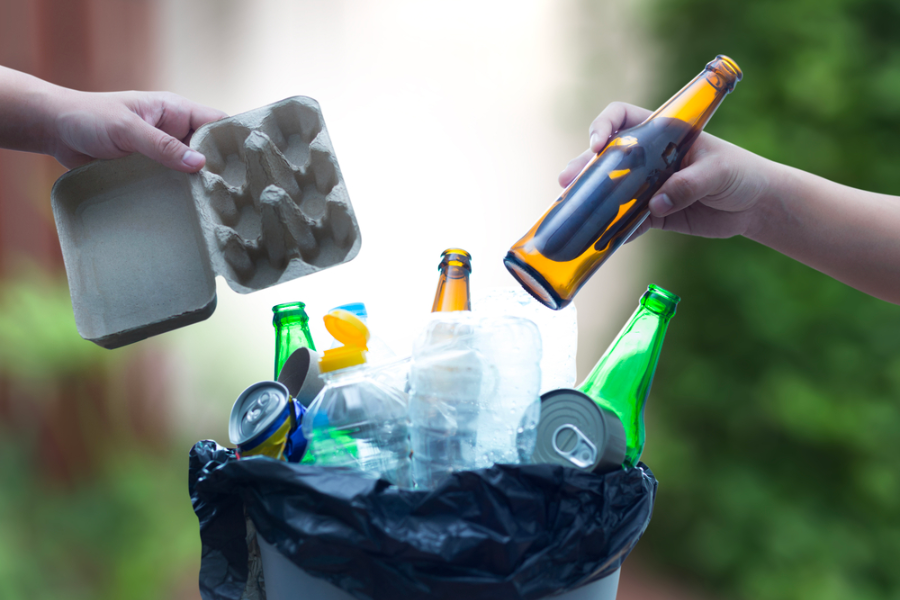It’s Time to Get Toxic Chemicals Out Of Dry Cleaning
January 22, 2019
Today’s Guest Blog is by Steve Whittaker and Ashley Pedersen with the Local Hazardous Waste Management Program in King County, Washington. The article was originally posted in Environmental Health News on December 13, 2018.
Perchloroethylene, a probable human carcinogen, remains the most frequently-used solvent for dry cleaning. It's time to help the industry change—and our county is doing just that.
When perchloroethylene (PERC) was introduced to the dry cleaning industry in the 1930s, it must have seemed like a miracle solvent.
It cleans clothes well and – most importantly – it is nonflammable. This is in contrast to the previous solvents, like Stoddard solvent, gasoline, turpentine, and even benzene. Because the use of these flammable solvents resulted in catastrophic fires and explosions, government regulations forced dry cleaners to move out of highly populated areas. With the advent of PERC, dry cleaners could move back to population centers, where the customers were.
The dry cleaning industry provided a unique opportunity for a whole generation of immigrants. A 2011 survey indicated that in King County, Washington, for instance, more than 80% of dry cleaning business owners emigrated from South Korea. For many of these immigrants, dry cleaning was the ideal business. They readily grasped the complexity of the dry cleaning process and were able to build successful businesses through hard work.
Unfortunately, very few are aware of the health risks associated with a lifetime of using a hazardous chlorinated solvent.
Old machines, hazardous exposures
The earliest dry cleaning technology used "transfer machines," where fabrics washed in PERC were manually transferred to dryers while still wet. The exposures to PERC were massive, and several epidemiological studies suggest excess risk for cancer and adverse effects on the nervous system, kidneys, liver, immune system and the hematologic (blood) system.
Although transfer machines are now banned in the United States and replaced with enclosed "dry-to-dry" machines, we still see PERC exposures. In King County, most PERC machines are more than 20 years old, which is past their operational lifespan of 15 years. These old machines are leaking. We have measured hundreds of parts per million of PERC in the ambient air of dry cleaners.
Workers are also exposed to PERC when they remove fabrics from the machine, handle their hazardous waste, and deal with accidental spills.
Here in King County, the Local Hazardous Waste Management Program has provided technical assistance to the dry cleaning community for more than 20 years.
When we considered the legacy of PERC's effects on health and the environment, we realized that we needed to get PERC out of dry cleaning.
There are almost 200 sites in King County contaminated with PERC. In addition, some of our local communities draw their drinking water from shallow aquifers, which contain detectable levels of PERC. The U.S. Environmental Protection Agency (EPA) is currently evaluating PERC for possible restriction, so we recognized an opportunity to help dry cleaners switch to safer alternatives – and avoid "regrettable substitutes" – ahead of potential federal regulations.
Making the switch
Several jurisdictions have already taken steps to remove PERC dry cleaning machines from circulation. The California Air Resources Board (CARB) passed a regulation in 2007 phasing-out PERC dry cleaning by 2023. The Cities of Philadelphia and Minneapolis have also passed phase-outs.
Other jurisdictions have given tech and financial support to help dry cleaners switch to safer alternatives, including Massachusetts (via the Toxics Use Reduction Institute), New York State, the South Coast Air Quality Management District, and the City of Minneapolis.
We engaged our dry cleaning community to find out what it would take to help them switch. We worked with leaders in the Korean-American community to host meetings of the local dry cleaning association, facilitated focus groups, and conducted numerous interviews with dry cleaners – all in Korean. We learned that cost was the single greatest barrier to replacing old PERC machines with safer technology.
In 2018, we began offering $20,000 equipment reimbursement grants to help dry cleaners replace their PERC machines with professional wet cleaning, which relies on water and detergent, rather than an organic solvent.
The latest generation of professional wet cleaning is an integrated system, comprised of a programmable washer, a moisture-sensing dryer, and specialized detergents and conditioners that allow any "dry clean only" fabric to be washed in water.
So far, we have provided grants to seven dry cleaners — and all seven are no longer inhaling PERC. Some workers are reporting significant improvements in their health. Shop owners are also saving money because they no longer generate hazardous waste and their utility bills are much lower.
Our goal is to make King County PERC-free by 2025 by offering 10 grants of $20,000 per year.
Providing grants to small businesses is a positive step in helping eliminate dangerous chemical exposures that impact the health and environment in our communities.
Ashley Pedersen and Steve Whittaker are with the Local Hazardous Waste Management Program in King County, Washington, where they manage the county's financial incentive program to transition PERC dry cleaners to safer alternatives.
LHWMP is a regional collaboration between Public Health - Seattle & King County, King County Department of Natural Resources and Parks, Seattle Public Utilities, and suburban cities in King County.
Environmental Health News publication of Environmental Health Sciences, a nonprofit, nonpartisan organization dedicated to driving science into public discussion and policy on environmental health issues, including climate change. The article is reprinted by permission.
Disclaimer: Guest blogs represent the opinion of the writers and may not reflect the policy or position of the Northeast Recycling Council, Inc.
Share Post





